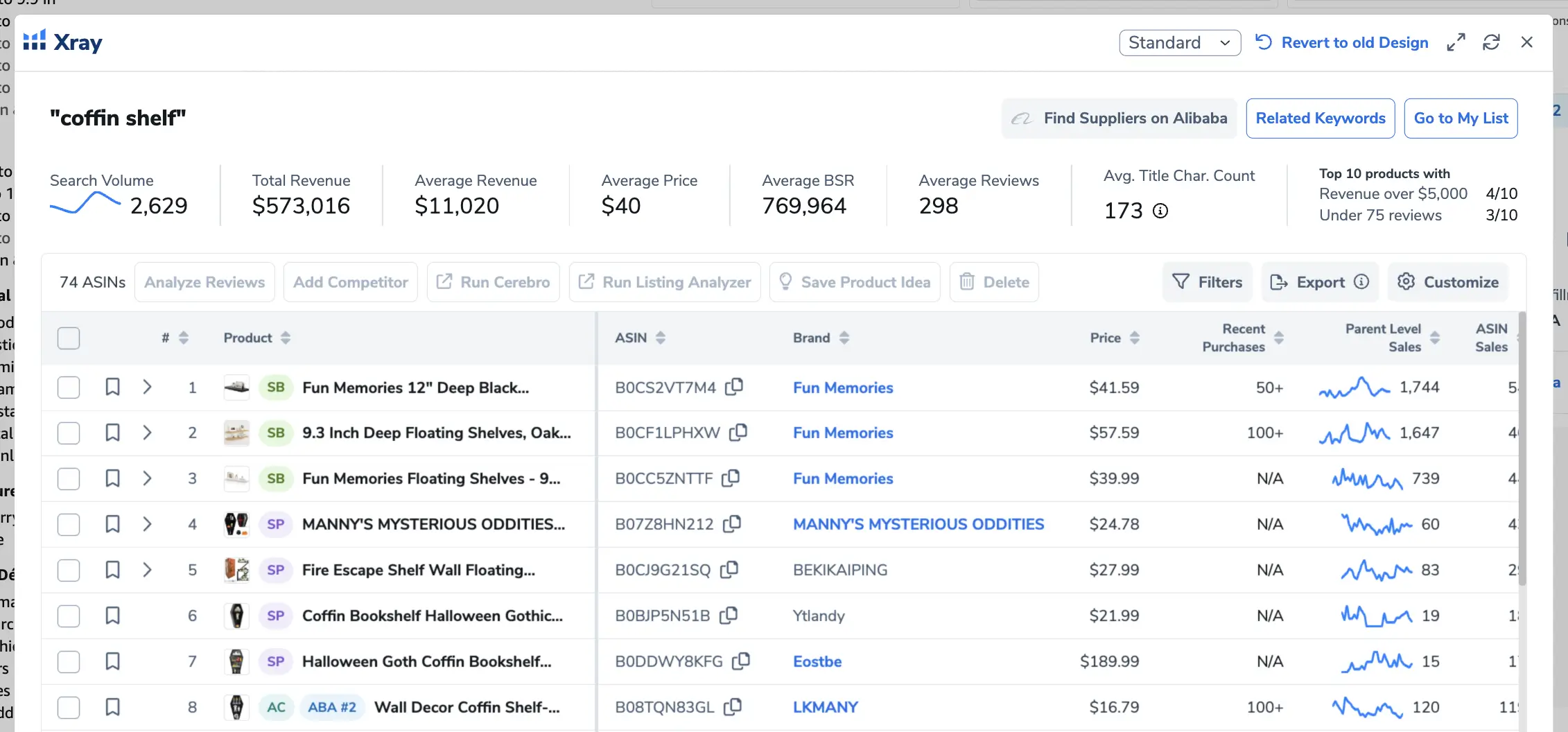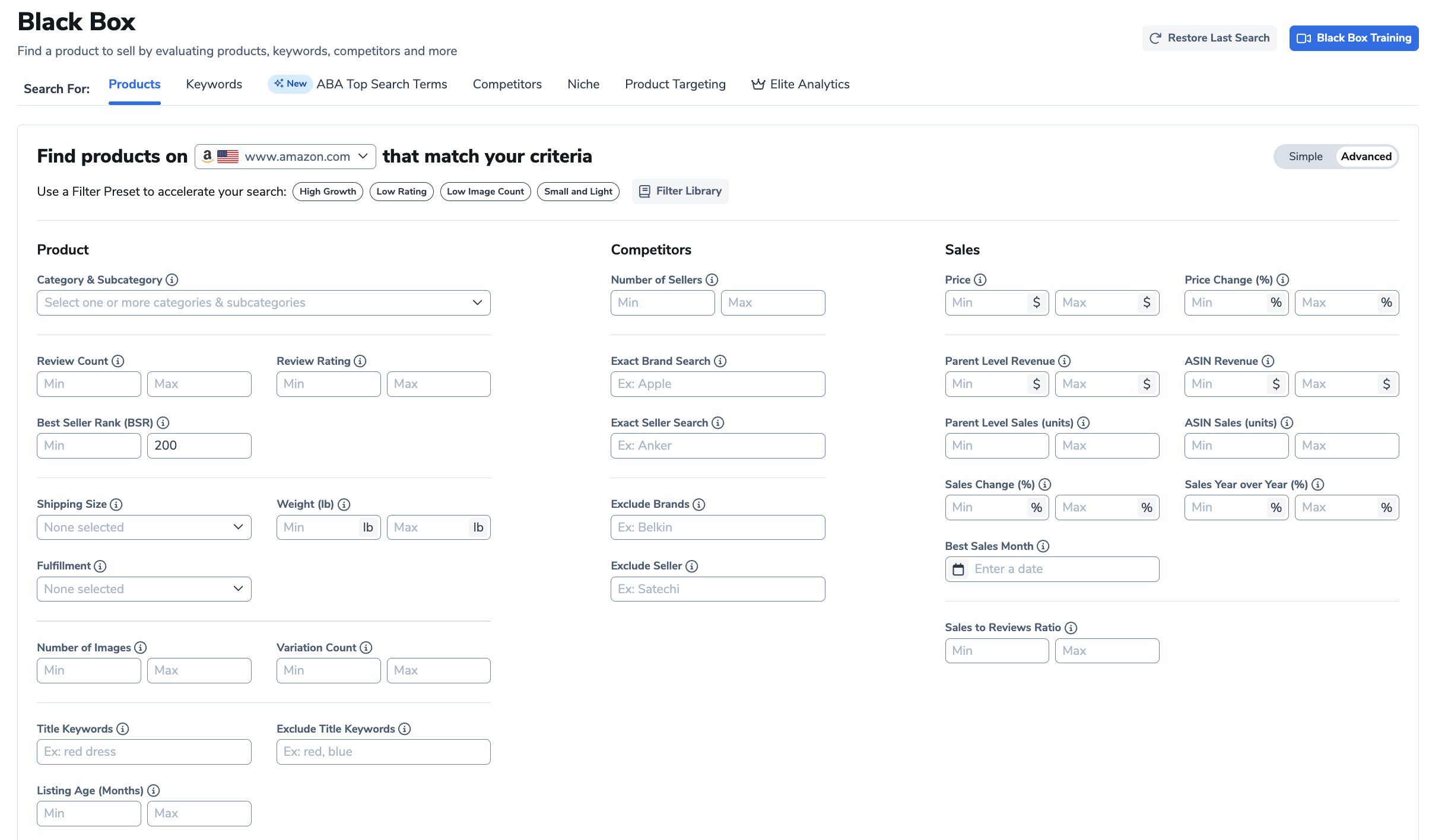
Amazon Sales Rank: Explained


Table of Contents
- How does Amazon Sales Rank work?
- Where to Find Amazon Sales Rank
- Why is Amazon Sales Rank Important?
- Limitations of Amazon Sales Rank
- Sales Rank Consistency
- Your broad category is not necessarily your market.
- So Then, What is a Good Amazon Sales Rank?
- Helium 10’s Chrome Extension calculates your Amazon Sale Ranks for you.
- Selling on Amazon is not a race to the #1 BSR, don’t get fooled into thinking otherwise.
- Think Again Before Using BSR for Product Research
- Bonus Product Research Tip
Your Amazon sales rank is the numerical representation of how well your product sells against other products in your category on Amazon.
Also known as your Best Sellers Rank (BSR), your Amazon sales rank functions as a litmus test of your sales overall, albeit one that is constantly fluctuating. It’s a trailing indicator of sales velocity that is typically displayed on a product’s detail page under the “Product Details” section. Even though Amazon updates this hourly, those data points can sometimes be a few days old.
As a new or aspiring Amazon seller, it would seem there are always a “TOP 3 METRICS YOU NEED TO KNOW”.
Seller rating, product defect rate, sales, profit margin, ROI, advertising cost of purchase…
and with a name like Amazon Best Sellers Rank, your BSR makes a pretty strong claim to the throne.
We’re here to break down what you need to know about your Amazon sales rank. And why it may not be a metric worth losing sleep over.
How does Amazon Sales Rank work?
To reiterate, an Amazon Best Sellers Rank (BSR) is a metric that reflects the popularity of a product within its category and subcategories on Amazon. Since Sales Rank is category-specific, this means a product can in fact have multiple ranks if it belongs to more than one category or subcategory.
Here is the Best Sellers Rank defined by Amazon:
“The Amazon Best Sellers calculation is based on Amazon sales, and is updated hourly to reflect recent and historical sales of every item sold on Amazon.”
As explained by their own definition, Amazon sales rankings are in a constant state of change. Ranking can fluctuate significantly depending on sales trends, promotions, or seasonality. This is simply due to the fact that, at any given moment, the millions of products being sold on Amazon are being purchased at different rates. It’s this controlled chaos that allows sellers to compete with each other (and is at the heart of “e-capitalism” in 2024).
Higher sales lead to a better (lower) rank, with #1 being the top-selling product.
Additionally, it’s important to note that your Amazon BSR is a relative number. This means that being ranked at 5,000 in November of 2024 when the Amazon marketplace is relatively normal means something very different from being ranked 5,000 in April of 2020 when COVID-19 completely changed the economy.
Where to Find Amazon Sales Rank
Sellers can find each product listed on Amazon’s Sales Rank on the product page. Simply pull up the product page. Then scroll down until you see a section titled either Product Details or Product Information.

It will be below the product description provided by the seller. You’ve gone too far if you see the Questions and Reviews sections (above product description). You’ll see a list of the Amazon Sales Rank for the product for each category it’s listed in.
Why is Amazon Sales Rank Important?
This metric is a great way to keep a pulse on your sales performance and serves as a competitive benchmark. A lower rank reflects strong sales, high demand, and performance relative to the heavy hitters in your niche. A great BSR can also contribute to building customer trust, as shoppers often consider Sales Rank when comparing products. Why?
To better understand the Amazon sales ranking process, we need to take a look at the inner workings behind the scenes. AKA sales velocity.
Sales velocity is the number (and dollar amount) of your sales in a given month and a high monthly sales velocity helps sellers find favor with the Amazon ranking algorithm.
All this to say: more sales = stronger sales rank. The lower the number, the better; #1 being the best BSR you can have in a category.
Limitations of Amazon Sales Rank
However, there are some limitations to all this. Amazon does place limits on sales velocity to protect its customers. This is common for many new sellers who experience spikes in sales as their brand grows.
Sales velocity limits are based on the ratio of sales to factors like available inventory, seller feedback, and past sales history. It’s Amazon’s way of determining, “Is this seller generating a realistic/legitimate number of sales or is something fishy going on?”
These sales velocity limits are typically in place for listings and accounts that are less than 6 months old.
When you approach or exceed your sales velocity limit, Amazon will conduct a sales velocity review. This means a temporary hold will be placed on the funds in your account along with possible product listing suspensions. Don’t panic.
This is a relatively standard process. Do not worry about starting the review process ahead of time – Amazon will reach out to you if a sales velocity review needs to take place.
To learn more about how to accelerate the account review process, read what Amazon has to say about the matter here.
Also, while Amazon Sales Rank can be a useful metric, it does not always provide the full picture. It doesn’t account for profitability or advertising costs. A high rank doesn’t always translate to sustained success if the sales are driven by temporary promotions or discounts and it is not a direct indicator of search visibility or conversion rate.
Sales Rank Consistency

What I mean by it not being a direct indicator of search visibility or conversion rate is sure – sometimes, your product’s sales volume can influence your Amazon sales rank. However, it is also entirely possible for your sales to remain the same and your product’s BSR to drop.
This would be an indicator of a shift in the market. The market may be expanding, bringing with it stiffer competition. Even though you have been doing everything right (maintaining a steady stream of sales), your market share is shrinking.
You may be at a current rank of 1,000 in the “Outdoors” category, but you can’t compare yourself to the entire 1 million+ products in that category.
Your broad category is not necessarily your market.
That’s why we created Market Tracker, Helium 10’s Amazon market tracking tool. This new Amazon seller tool allows you to hyperfocus precisely on who you want to compare yourself against and reveal your authentic market volume.

Monitoring your market share is critical to staying a step ahead of your competition and evaluating your industry’s overall health.
Data from Amazon’s Best Sellers Rank drives our Amazon sales estimator within Market Tracker to make these insights possible.
So Then, What is a Good Amazon Sales Rank?
Theoretically since Amazon Sales Rank is a good indicator of how well a product is currently selling on Amazon in its multi-million product catalog.
It’s simple. The lower the product’s BSR, the better its sales.
Helium 10’s Chrome Extension calculates your Amazon Sale Ranks for you.

Bradley Sutton, our Chief Evangelist and Director of Training here at Helium 10 says, “BSR is meaningless to me. With Helium 10’s chrome extension Xray, you get estimated sales for competitors. For your products, you already know what your sales are – from Seller Central. Your total sales are what matters, not your total sales against everyone else.”
BSR is great for data gathering. As we mentioned, this data helps fuel Helium 10’s Amazon seller tools to extrapolate sales estimations. This data is changing throughout the day – staying on top of it allows us to give you the most accurate snapshot possible of your competition.
However, for the majority of online sellers, the Amazon Best Seller Rank is a vanity metric.
Selling on Amazon is not a race to the #1 BSR, don’t get fooled into thinking otherwise.
Focus on maintaining (or increasing) your sales month to month and keeping your margins healthy. Remember, having a good Amazon sales rank is meaningless if you’re losing money on every sale.
Another thing to think about. If you were to buy a new workout tank top on Amazon, would you go to the best sellers page for the entire “Clothing, Shoes, and Jewelry” category, or would you start your shopping with a more specific search?
Most customers don’t visit Amazon to window shop. Do not try to game your BSR standings. Not only does it violate Amazon’s terms of service, but it’s also unlikely to benefit you in the long term.
Instead, if you really wish, you can use the BSR to monitor competitors, improve rank by trying to understand how to optimize your listings, leverage for pricing and track performance over time.
Also to play devil’s advocate…
Think Again Before Using BSR for Product Research
Since Amazon seller rank is such a prominent (and let’s face it, glitzy sounding) metric, many new sellers assume Amazon’s BSR list is a great place to start their product research.
As an example, take the example of an adult coloring book.
Using Helium 10’s free Amazon Chrome Extension, we can look at any product’s BSR. More importantly, we can check its BSR history – typically seen right below the product listing page.

Imagine when we look at the adult coloring book’s product’s BSR history over the past 90 days, things look pretty promising. Remember, with Amazon’s Best Sellers Rank, the lower the number, the higher the rank.
Say it’s been hovering around 2,000 (and even much higher-ranked than that). You may begin to make some product decisions of your own based on this information.
A simple change in perspective can change the whole story. In this expanded view, we can see the product’s rank was previously much lower (a higher number) than it looked like in the 90-day view.
After a (presumably) normal ranking bump around the holidays, that adult coloring book began to sink in the ratings around April and May. Suddenly, June rolls around, and the product starts performing like an Amazon bestseller.
What happened in June?
We can begin to search for a more holistic picture.
Instead of just a pinhole view of seemingly useful data, we now have a more refined holistic approach to the sales trend. This is a cursory example (more research would be needed to generate actionable info), but it still illustrates my point.
Don’t miss the forest for the trees!
Bonus Product Research Tip
Many of our free Helium 10 users know about Black Box, our revolutionary Amazon product research tool. However, many don’t know you can include BSR as a filtering field for any product category or keyword search. For all the filter freaks out there (like me), this is heaven.
For example, I can run a search for products within the Pet Supply category but tell Black Box to only show me products with a top 200 BSR. However, Black Box is much more than merely a glorified Amazon sales rank chart.

Use the drop-down menu to continue filtering and drill down to get the specific data you’re after. Just don’t forget to check BSR history with the Xray Chrome Extension. Like we mentioned earlier, this can help avoid misreading sales trends!
Achieve More Results in Less Time
Accelerate the Growth of Your Business, Brand or Agency
Maximize your results and drive success faster with Helium 10’s full suite of Amazon and Walmart solutions.

